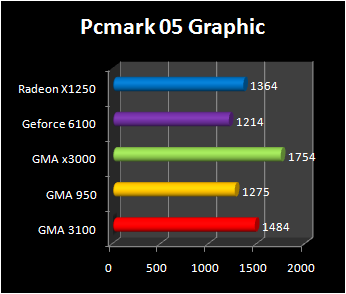Intel G33 Opengl Driver
Support product highlights, featured content, downloads and more for Graphics Drivers for Intel G33 Express Chipset.
HP Pavilion a6857c Desktop PC. Windows 7 64 Intel G33/G31 Express chipset family 1 Is this HP applied video chipset OpenGL 2.0 and higher - 957541.


A walk-through on how to configure OpenGL DirectX G31 Express Chipset Graphics Drivers for Intel G33 Express Chipset Graphics Drivers for Intel G35.
I am installing OnOne Perfect photo suite 8.0 and says i need to have OpenGl 2.0 my video card is an Intel R G33/G31 Express chipset family and i am trying to.
The latest graphics drivers will usually provide the best compatibility with games that use OpenGL. Graphics drivers that Intel G33 Express Chipset; Graphics.
FOR CODING PURPOSES, PLEASE DO NOT EDIT ABOVE THIS LINE.
this comment will not show on the live version of this page
Many games require support for application programming interfaces APIs to function, and to provide a high-quality gaming experience. OpenGL and DirectX APIs are designed to render 2D and 3D graphics. Note The dialog box that displays, and the options for 3D settings, depends on your operating system and the graphics driver you have installed.
Open GL and DirectX settings are managed through your graphics properties. Right-click on your Desktop. Click Graphics Properties 3D. Find the Intel Graphics name that displays on your screen, and follow the instructions provided here for settings.
Click or the section descriptions to expand the content: Attribute Default value Other applicable values
Off default value - Enables vertical synchronization also known as vertical sync or VSYNC. Vertical synchronization allows a frame change to coincide with an analog monitor s vertical blanking interval. This might help reduce or eliminate tearing in the video, but can cause reduced frame rate since the frame change is delayed until the vertical blank interval.
On - Disables vertical synchronization.
A technique that can help to reduce or eliminate visual artifacts such as flickering, tearing, or shearing. This is done using three buffers to minimize the delay in redrawing the image, at the cost of higher memory usage.
Default default value - Driver selects triple buffering based on available memory.
Off - Disables triple buffering.
On - Enables triple buffering.
Flip default value - In applications that run in full screen, enables flip multi-buffering. With flip operations, the render buffer is directly connected with screen and when it is rendered it is just swapped on to the screen with no copying occurring.
Blit - Enables blit multi-buffering which copies rendered buffer on to the screen. With blit operations, several bitmap patterns are combined into one using a raster operator. Applications running windowed not full-screen can only use blit operations.
Depth Buffer Bit Depth Off On
16 Bit Depth Buffer - Forces a 16-Bit depth buffer on PixelFormats that have a depth buffer.
24 Bit Depth Buffer - Forces a 24-Bit depth buffer/8-bit stencil buffer on PixelFormats that have a depth buffer.
Force S3TC Texture Compression Off On
S3TC is a method of texture compression to reduce the texture size, for the cost of lower texture quality and higher processing power demand.
Off default value - Driver does not automatically compress all RGB and RGBA format texture images into S3 compressed format.
On - If S3TC extension is supported, the driver automatically compress all RGB and RGBA format texture images to kept them internally in S3TC format. It reduces the amount of required memory/allows to support more textures.
Force FXT1 Texture Compression Off On
FXT1 is another method of texture compression to reduce the texture size, for the cost of lower texture quality and higher processing power demand.
Off default value – Driver does not automatically compress all RGB and RGBA format texture images into FXT1 compressed format.
On - If FXT1 extension is supported, driver automatically compresses all RGB and RGBA format texture images into FXT1 compressed format.
Driver Memory Footprint Off On
Specifies a preferred bit depth for texture maps on devices that support multiple texture bit depths.
Anisotropic filtering enhances the final image quality when textures are used for surfaces that appear to be non-orthogonal to the screen, at the cost of performance.
Application Control default value - Filtering controlled by the application.
On - Enables anisotropic filtering.
Off - Disables anisotropic filtering.
You can change the value of each OpenGL attribute or restore the default values to all attributes. Select the apply button to save your changes.


How to Access OpenGL* and DirectX* 3D Settings for Graphics Drivers
